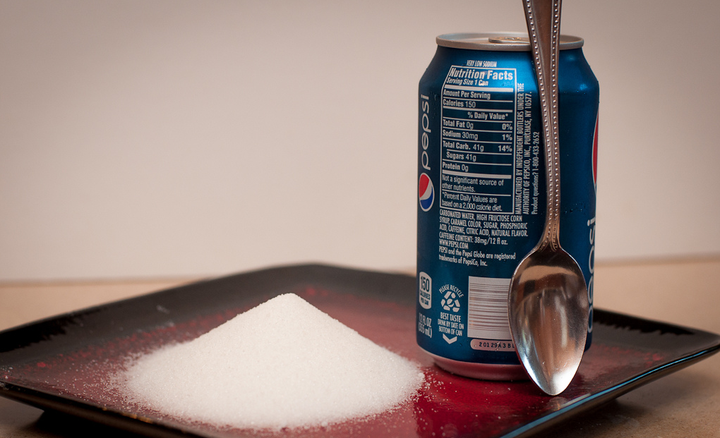
Since Mexico introduced a 10 percent “tax” on sugar-sweetened beverages in 2014, global political momentum for this form of fiscal policy has been building. Societal interest and support have also grown.
Taking a lesson from similar efforts to reduce tobacco use, the “tax” sees price as a tool to make an unhealthy choice less attractive while revenue raised can be earmarked to offset the existing burdens of associated disease. In a bid to reverse trends which have seen Mexico compete with the United States as one of the most obese nations in the world, earliest evidence suggests their tax is working as planned. In the first year, sales of sugar-laden beverages dropped by up to 12 percent, with health benefits expected to follow.
One of only a handful of countries to successfully implement such a strategy, Mexico was then followed by the United Kingdom when in March 2016, it too announced a planned excise on sugary drinks. In this case, the greater the health risk, the higher the levy: It will apply to sugary drinks containing at least 5g of sugar per 100ml (3.4 oz), with a higher levy rate for those with more than 8g per 100ml (3.4 oz).
What does this look like for a shopper at the till? Many “single serve” soft drink bottles contain 600ml (20 oz), and 64g of added sugar. The World Health Organization recommends an upper limit of roughly 25 grams of added sugars per adult per day to remain healthy. This new UK tax would add 15 pence (AU$0.30) to the price of this drink.
But as momentum and supporting evidence builds, so too does the pushback from industry and their lobbyists. With a history of dubious behavior including funding research aimed to confuse the public, and with their profits under threat ― a range of false and misleading arguments are being tabled that we had better be ready for.
Let’s explore just five.
1. It’s NOT new or frightening.
Contrary to rhetoric we are already beginning to hear again, applying a higher price to sugary drinks to incentivize health and help pay for school breakfast or education programs, health and dental care, is not new ― or scary. But the industry will tell you otherwise as a way of tempting us to maintain the seemingly “safe” status quo.
The concept of building in the true costs of a product, paid at the point of purchase instead of a “drink now and have society pay later” approach, is not new or risky. But it is evidence-based.
The risk does comes with inaction; continuing unchecked as populations drink two, three or fourfold the recommended daily intakes of added sugar.
In fact in recent years, higher and lower income countries including Hungary, France and Chile have all implemented a tax and the UK announcement follows a similar policy by South Africa earlier this year.
2. Sugar is artificially cheap — and we are already paying the price.
When we buy a 60 oz bottle of soda (a combination of three of the cheapest ingredients around ― water, sugar and a petroleum-based casing), let’s say we buy it for $3. Power and profit in the industry allows this price to be artificially cheap. There is a cost to society, though, for making access so easy: The health effects that will likely result from collective consumption. This is known as an externality.
This externality, or hidden cost, is paid many years later by everyone ― but it is never seen or felt at the time of purchase or consumption. In essence, we are all subsidizing the purchase of soda. This is a form of market failure, leading to consumers drinking more than they would otherwise (because it’s cheaper than markets would otherwise allow it to be), and to companies producing more of the product because it’s unusually inexpensive to make. The loop of excess and disease is then closed with multi-billion dollar advertising campaigns, which keeps us all in the dark and drinking sugar.
An important realization: this is not even about a tax. This is about true pricing and transparency for consumers, including our kids.
3. Such policies DO work.
Another argument will be that true pricing doesn’t work.
Studies by experts looking at the possible effectiveness of a sugar pricing policy in my home nation, Australia, found that an approach similar to that planned in the United Kingdom or implemented in Mexico would see decreases in added sugar consumption ― resulting in small but important declines in the prevalence of obesity of about 0.7 per cent in men and 0.3 per cent in women. This may not sound impressive, but extrapolated over 25 years and the potential becomes clear. Building in the true costs of sugar-drinks would see 4,400 fewer cases of heart disease and 1,100 fewer strokes among Australians. 1,600 deaths would be avoided and savings to the national health-care system would add up to A$609 million (US$454 million).
This is in addition to the estimated A$400 million (US$300 million) annually that would be recuperated by the removal of the existing societal subsidy. Money that could then pay for community services, dental programs, healthy food subsidies, school-based food education or kitchen garden programs.
4. It HELPS the poorest the most.
As a proportion of their income, it is true that a small increase in the price of sugary drinks would place a greater economic burden on someone with a smaller paycheck, than someone with a larger one. The industry will therefore argue that a sugar tax would be regressive ― or hurt the poor.
All evidence and logic actually argues the opposite.
Cheap, sugar-laden drinks accompanied by careful and extensive marketing campaigns have meant these liquid lollies have become a major source of calories - across the entire income spectrum.
Early data from the first year in Mexico suggests that the poorest have the greatest exposure to health risk from sugary drinks, and drink more of these unhealthy products, with adverse health consequences. In essence, the poorest communities have most to gain. It also suggests that the small increase in price sees the greatest decreases in purchasing among the poorest - who reduced their buying by 12 percent.
In other words, an increase in the price of unhealthy sugary drinks has the greatest, positive health effects on the poorest ― who drink less as a result and whose health will likely benefit most. Not to mention the indirect economic benefits of better health, or the fact that greater government revenue in the UK for example, is being used to provide breakfast programs for school-age children in poorer neighborhoods.
5. It’s NOT nanny state, it’s good public policy.
At the end of the day, something has to change. Many of us now live in societies where 6 or 7 in every 10 of us are overweight or obese. We don’t need silver bullets. We need practical policy solutions that work.
Building in the true cost of sugary drinks and allowing us to invest in healthcare and our communities through the revenue benefits is not “nanny statism.” It is not about banning and this is not even about taxing. Progressive pricing policies are about informed decisions, respecting the consumer, honest economics, sound public health policy and ultimately a step towards fixing a deeply broken system.
And that’s the bitter truth of true costing on sugar.
***
Connect with Sandro on Twitter (@sandrodemaio) to comment or share.
This post was written by Dr Alessandro Demaio in his personal capacity. The views, opinions and positions expressed in this article are the author’s own and do not reflect the views of any third party. Additionally, those providing comments on this blogs are doing so in their personal capacity, and do not necessarily reflect the views, opinions or positions of the author.
